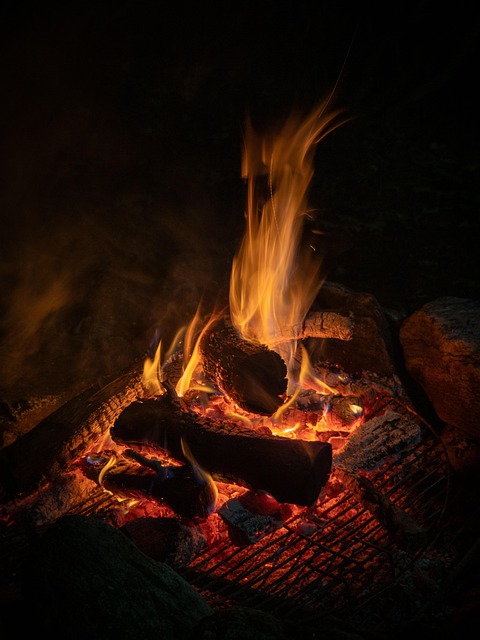Selling a fire-damaged home in California involves navigating a complex property valuation process that considers emotional impacts, insurance claims, damage extent, reconstruction costs, and local market trends. Professional appraisers or insurance adjusters conduct thorough inspections to provide accurate valuations. Key factors include the severity of damage, location's resilience to fires, and potential for rebuilding or renovation. Expert guidance is crucial, including deconstructing damaged areas safely, engaging specialised real estate agents who understand these challenges, and marketing the home to buyers interested in both opportunity and reconstruction potential.
“After a devastating wildfire, homeowners in California often find themselves navigating complex property valuation processes. This comprehensive guide delves into the intricacies of post-fire property assessment, offering a detailed look at the steps involved. From understanding the unique challenges of California’s fire-prone areas to assessing damage and determining fair market value, we provide essential insights for those looking to sell their fire-damaged homes. Discover practical tips and expert advice tailored to this specific real estate scenario.”
- Understanding Post-Fire Property Valuation in California
- Assessing Damage: The Initial Inspection Process
- Factors Influencing Property Value After a Fire
- Selling Your Fire-Damaged Home: A Step-by-Step Guide
Understanding Post-Fire Property Valuation in California

After a fire, property valuation in California becomes a complex process that requires specialized knowledge and expertise. When a home sustains damage from a fire, it’s natural for homeowners to wonder about the value of their property in its current state. In California, post-fire property valuation involves assessing not just the physical repairs needed but also the emotional impact on residents and the potential for insurance claims.
This process is crucial for selling a fire-damaged home in California. Real estate agents and appraisers must consider factors like the extent of damage, reconstruction costs, and market trends specific to the affected area. Additionally, the presence of smoke and water damage can significantly influence the valuation, often leading to lower estimates. Homeowners looking to sell their damaged properties should be prepared for a meticulous evaluation process that goes beyond traditional appraisal methods.
Assessing Damage: The Initial Inspection Process

After a fire, assessing the damage is a crucial step in the property valuation process, especially for those looking to sell a fire-damaged home in California. The initial inspection involves a thorough examination of the structure’s integrity, identifying any structural issues or safety hazards. Professional appraisers or insurance adjusters often lead this process, meticulously documenting every aspect of the damage—from charred walls and melted flooring to blackened ceilings and damaged electrical systems.
During this assessment, they carefully evaluate the extent of the fire’s reach, considering not only visible evidence but also potential hidden damage. This might include checking for water damage from fire-fighting efforts, assessing the stability of the building’s foundation, and examining the condition of essential systems like plumbing, heating, and cooling. The goal is to provide an accurate picture of the home’s current state, helping owners make informed decisions about repairs, replacement, or, in some cases, selling as-is for a fair price in the California market.
Factors Influencing Property Value After a Fire

After a fire, several factors come into play when determining the value of a property in California. The extent of damage is a primary concern; minor fires might only affect specific areas, while more severe ones could devastate entire structures. Insurance adjusters and appraisers carefully assess these damages, considering both structural integrity and potential safety hazards.
The location of the property also plays a significant role. In California, proximity to natural disasters like wildfires can impact resale value. Neighborhoods with a history of fire activity might face challenges in attracting buyers, especially if insurance premiums are high. However, well-maintained properties that survived fires relatively unscathed could still hold value due to their location and the potential for rebuilding or renovation.
Selling Your Fire-Damaged Home: A Step-by-Step Guide

Selling your fire-damaged home in California can be a challenging process, but with the right preparation and approach, it’s definitely achievable. The first step is to assess the extent of the damage. Retain a qualified professional to inspect your property and provide an accurate estimate of repair costs. This will help you set realistic expectations for potential buyers.
Next, deconstruct any areas that are severely damaged to make the property more appealing. Remove all hazardous materials if necessary and ensure the safety of the premises. Once prepared, hire a reputable real estate agent specialised in selling fire-damaged properties. They can guide you through the legalities, help stage your home to maximize its appeal, and market it effectively to potential buyers who may be looking for opportunities or willing to rebuild.
Post-fire property valuation in California involves a complex process that requires meticulous assessment and consideration of various factors. Understanding how a fire impacts your home’s value is crucial when deciding to sell a fire-damaged property in this state. By following the step-by-step guide outlined in this article, homeowners can navigate the selling process more effectively, ensuring they receive a fair price for their fire-affected residence while also being aware of the unique challenges and considerations involved in the California real estate market.





